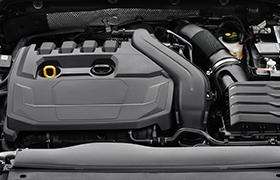Common Problems with Reconditioned Skoda Octavia Engines (From A Mechanic Who Fixes Them Daily)

Common Problems with Reconditioned Skoda Octavia Engines (From A Mechanic Who Fixes Them Daily)

Why Reconditioned Skoda Octavia Engines Fail — And How to Spot the Signs Early
I’ve spent years helping customers source reliable engines, and I’ve seen my fair share of reconditioned Skoda Octavia engines that didn’t live up to expectations. One common issue is improper valve timing after the rebuild. If the timing belt or chain isn’t set correctly, you might notice rough idling, loss of power, or even hear knocking sounds. In worst cases, this can cause severe damage, like bent valves or a cracked piston. Checking for these signs early—such as unusual engine noises or a check engine light—can save you from costly repairs down the line.
Another problem I often see is oil leaks in a reconditioned engine. This usually happens because of cheap gaskets or sloppy sealing during the rebuild. A telltale sign is oil spots under your car or a burning smell after driving. A quality rebuild should use OEM-standard parts and be rigorously tested before fitting. To avoid these issues, always ask your supplier about their reconditioning process and insist on a warranty for the Skoda Octavia engine supplied and fitted. It’s the best way to ensure you’re getting a reliable engine that lasts.
The Hidden Risks of Buying A Used Skoda Octavia Engine Online
As someone who connects customers with trusted suppliers, I’ve heard too many horror stories about used Skoda Octavia engines bought online. People think they’re getting a great deal, but these engines often hide serious issues like worn bearings or cracked blocks. Unlike a remanufactured engine, which is thoroughly tested to factory standards, a second-hand engine might only get a quick spin to check if it starts. That’s not enough to reveal deep-rooted problems, leaving you with a costly fix.
I once had a customer who bought a used Skoda Octavia engine from an online marketplace. It seemed fine at first, but within weeks, it started smoking heavily due to sludge buildup and worn seals. A compression test could have spotted this before purchase, but the seller provided no history. My advice Always request detailed service records or have a mechanic inspect the engine in person. If you’re using our platform, we connect you with vetted suppliers who offer transparency and warranties, so you can avoid these risks.
Rebuilt vs Remanufactured Skoda Octavia Engines Which are Less Likely to Break Down
Having worked with both rebuilt engines and remanufactured ones, I can tell you there’s a big difference in reliability. A rebuilt Skoda Octavia engine usually involves fixing only the broken parts, like replacing worn pistons or gaskets. While this can be cheaper, it leaves older components in place that might fail soon after. I’ve seen customers return with issues because their rebuilt engine still had tired timing chains or weak seals.
On the other hand, a remanufactured Skoda Octavia engine is brought back to factory specs with nearly all parts either new or fully refurbished. From my experience, these engines handle high mileage and stress much better. For example, a customer who chose a remanufactured engine for their 2.0 TDI Skoda Octavia drove 50,000 miles without a hitch. If your budget allows, go for a remanufactured option for peace of mind, but a well-done rebuild from a trusted supplier can still be a solid choice if you’re watching costs.
Installation Mistakes That Kill Replacement Skoda Octavia Engines
Even a top-notch replacement engine can fail if it’s not installed properly. One mistake I see often is improper coolant system setup. If the coolant lines are crossed or air isn’t bled out, the engine can overheat, especially in turbo models like the 1.8T. I’ve seen warped cylinder heads from this exact issue, turning a simple install into a major repair. Always double-check that your mechanic flushes and refills the coolant system correctly during fitting.
Another common error is skipping ECU recalibration. Modern Skoda engines, like those in the Octavia, rely on precise sensor data for fuel and ignition timing. If the ECU isn’t reset or coded to the new engine, you might get poor performance or constant warning lights. I once helped a customer whose new rebuilt Skoda Octavia engine supplied and fitted ran rough because the garage skipped this step. Always choose a technician familiar with VW Group systems to avoid these costly mistakes.
Why Some Reconditioned Skoda Octavia Engines Burn Oil (And What You Can Do About It)
Oil burning is a frustrating issue I’ve seen in some reconditioned Skoda Octavia engines. It’s often caused by worn piston rings or faulty valve guide seals that weren’t properly replaced during the rebuild. If the rebuilder cuts corners—say, by reusing old rings or skipping cylinder wall honing—you’ll notice blue smoke from the exhaust or need to top up oil frequently. Checking for these signs early can help you catch a bad rebuild before it wrecks the engine.
I once dealt with a reconditioned Skoda Octavia engine that burned oil heavily within a month of installation. After tearing it down, we found the cylinder walls weren’t honed correctly, so the new rings never sealed properly. We fixed it with a proper rebuild, and the oil burning stopped. If your engine is burning oil, don’t ignore it—insist on a warranty claim or a full inspection. Choosing a supplier through our platform ensures you get a reconditioned engine with quality parts and a solid warranty to back it up.
Real Stories from Owners — Lessons Learned the Hard Way
Over the years, I’ve heard plenty of stories from Skoda Octavia owners who learned tough lessons about engine choices. One customer bought a second-hand Skoda Octavia engine from an online ad, thinking it was a steal. It ran for a month before seizing up completely—no oil pickup tube, no lubrication, no chance. He lost thousands because the seller disappeared, and there was no warranty. This shows why you should always demand service records or use a trusted supplier.
In contrast, another owner chose a remanufactured Skoda Octavia engine through our platform. It came with a two-year warranty and has been running perfectly for over 60,000 miles. His advice Spend a bit more for a certified engine to avoid headaches. Whether you’re considering a rebuilt Skoda Octavia engine or a used one, stick to suppliers who offer clear documentation and warranties. Our free price comparison service connects you with vetted vendors to ensure you get reliability and peace of mind.
Categories
- 2013 Dubai Motor Show
- 2013 Frankfurt Motor Show
- 2013 Geneva Motor Show
- 2013 Shanghai Motor Show
- 2013 Tokyo Motor Show
- 2014 Detroit Auto Show
- 2014 Geneva Motor Show
- 2014 New York Motor Show
- 2014 North American International Auto Show
- Alfa Romeo
- Aston Martin
- Audi
- Audi A4 Check Engine Light
- Automotive News
- Avensis
- Beijing International Motor Show 2014
- BMW
- Cadillac
- Chevrolet
- Chicago Auto Show 2014
- Chrysler
- Citroen
- Daihatsu
- Detroit Motor Show 2013
- Diesel Engines
- Engines
- EV
- Fiat
- Ford
- General
- General Motors
- Geneva Motor Show 2014
- GM
- Guest Post
- Honda
- Hyundai
- Ideal Engines Reviews
- Infiniti
- Infographics
- Isuzu
- Jaguar
- KIA
- LA Motor Show 2013
- Lancia
- Land Rover
- LandRover
- Lexus
- Lotus
- Maserati
- Mazda
- McLaren
- Mercedes Benz
- Mini
- Mini Cooper S
- Mitsubishi
- New Technology
- Nissan
- Peugeot
- Porsche
- Range Rover
- Renault
- SEAT
- Skoda
- Smart
- Subaru
- Super Cars
- Suzuki
- Top Ten
- Toyota
- Transmissions and Gearboxes
- Uncategorized
- Vauxhall
- Volkswagen
- Volvo
- VW
